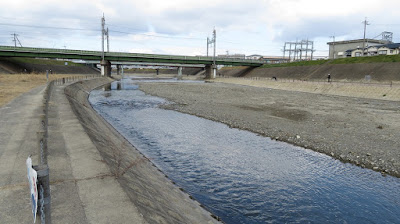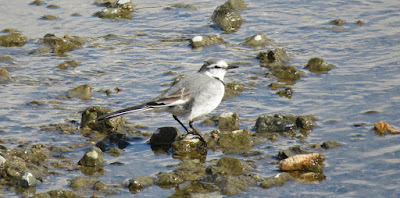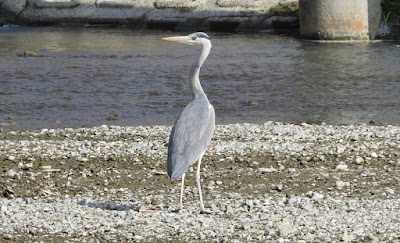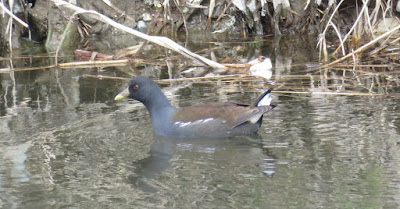Very little rain, and almost no snow has fallen in the Osaka area this year. As a result, water levels in the Ai River have continued to be low.
As can be seen in the photo below, much of the riverbed is gravel and dirt. Last summer there was a huge soil removal project to improve the drainage capabilities of the river.
Before
the soil removal project, there were large berms of earth in the middle of the
river that were covered with grass and brush.
As can be seen in the two comparison photographs below, the environment along the river is quite different from one year ago.
Spot-billed Duck (Anas poecilorhyncha)
Common
Teal (Anas crecca)
Eurasian Wigeon (Anas Penelope)
On one of my February walks, I came across the below carcass of a Eurasian wigeon. Judging by feathers scattered on the river bank near the body, I think the most likely suspect was a stray cat. Alternatively it may have been a Tobi (Black Kite) (Milvus migrans). On the morning I spotted this carcass, I witnessed a panicked flock of ducks escaping a Tobi flying overhead.
Northern
Pintail (Anas acuta)
Mallard (Anas platyrhynchos)
Kingfisher
(Alcedo atthis)
Japanese Wagtail (Motacilla grandis)
White Wagtail (Motacella alba)
White-cheeked
Starling (Sturnus cineraceus)
Grey Heron (Ardea cinerea)
Little
Egret (Egretta garzetta)
Crow
(Corvus sp.)
Cormorant (Phalacrocorax carbo) (juvenile)
Common Gallinule (Gallinula chloropus)
Plover (Charadrius sp.)
Dusky
Thrush (Tardus naumanni)
Eurasian
Tree Sparrow (Passer montanus)
Feral Pigeon (Columba livia)?
Other creatures found in the Ai River
Red-eared
slider (Trachemys scripta)
First
brought into Japan in the late 1950’s, these creatures became a popular pet in Japan
during the 1960’s. They are now found
throughout Japan, and are officially designated by law as an invasive species. Although I saw a number of them last summer,
I hadn’t seen any during December and January.
I wonder where and how this fellow spent the winter.




































No comments:
Post a Comment
Note: Only a member of this blog may post a comment.